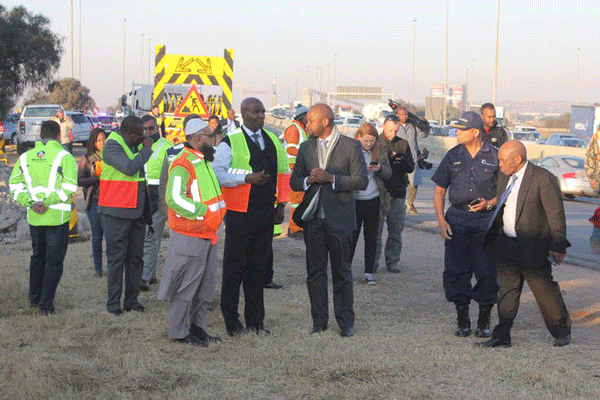
The South African National Roads Agency (SOC) Limited (SANRAL) has revealed that the Geldenhuys Pedestrian Bridge collapse on 9 August 2017 was caused by an impact force on the pier in the median of the highway.
All evidence suggests the impact was caused by an 18.1 ton coil of steel that was found lying some 100 metres north of the collapsed bridge on the N3 northbound road. Marks on the road led directly from the point of impact to where the steel coil came to rest.
Louw Kannemeyer, SANRAL Acting Engineering Executive, said: “The collapse of the Geldenhuys Pedestrian Bridge, B1187, on the N3 in the early hours of the 9th of August 2017 was caused by an impact force on the pier in the median of the highway, our investigation has established.
“Following the incident, SANRAL commissioned Superstructure Consulting Engineers to perform an independent investigation into the cause of the collapse. The firm has completed the investigation and handed its report to SANRAL.”
A detailed account
The scattered debris confirms the pier was hit by a strong external force. The report indicated the force involved was greater than what the design could withstand.
It also stated that statistically it is an extremely rare occurrence for a bridge support to be subject to an impact force of such an extreme magnitude at that height. It must be noted that the pier was protected by the median concrete barrier but that the impact was higher up.
The coil was subsequently inspected at ArcelorMittal premises in Vanderbijlpark and the marks on it indicated substantial impact with concrete.
SANRAL insurers are pursuing the matter with the third parties involved while the South African Police Service (SAPS) is performing its own investigation into the coil and the vehicle involved.
A bridge built for mining operations
The bridge was constructed in 1978 to provide pedestrian access between the mining operations in Germiston and the Geldenhuys Railway Station. The mining operation closed some years ago and the bridge has been closed to pedestrian traffic since.
Although the structure is no longer in use, it remained on SANRAL’s Bridge Management System.
As part of the roads agency’s general bridge inspection programme, the last inspection was conducted in July 2016 and no items of concern were picked up on the main structural elements.
All defects were designated as minor and irrelevant (minimal relevancy) by the bridge inspector.
“Several speculations about the cause of the collapse were proffered immediately after the incident had occurred and these included seismic effects, explosives and illegal underground mining in the area. The consulting engineers identified all possibilities and then ruled them out systematically until the actual cause was identified,” said Kannemeyer.
He thanked motorists, the Gauteng Provincial Government, SAPS, Department of Labour and Ekurhuleni Metro for their cooperation in the aftermath of the incident, especially during the site clearing period.

